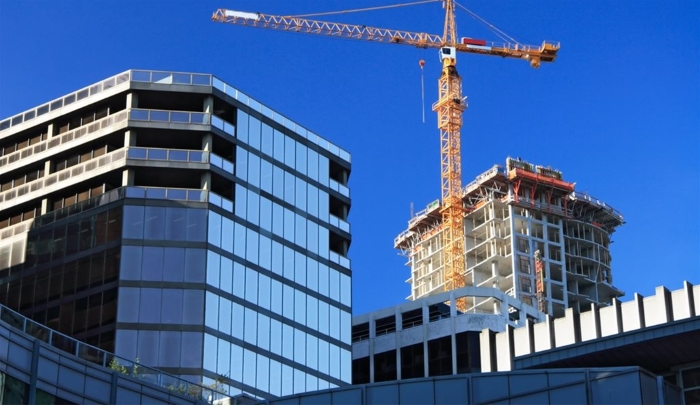New survey says landlords ‘need at least two years to comply’ with building safety bill
- September 22, 2020
- 8:30 am

Matt Head
Share this content
A survey of landlords found that one in three expected to need ‘at least two years to comply’ with the changes outlined in the building safety bill.
In July, the government published the draft bill, which included mention of the new role of the accountable person, who will ‘have to listen and respond’ to concerns and ensure resident are heard, called the accountable person. There will also be resident and leaseholder access to ‘vital’ safety information about buildings, and new complaints handling requirements for ‘effective action’.
The BSR will ‘oversee all this and make sure that accountable persons are carrying out their duties properly’, and ‘ensure that high rise buildings and the people who live in them are being kept safe’, with ‘new powers to raise and enforce higher standards of safety and performance across all buildings’. Resident panels will be appointed to have a voice in developing the regulator’s work.
The government will also be ‘speeding up’ its work with finance and insurance sectors to protect leaseholders from fire safety costs ‘without relying on tax payers’ money’, while a new building safety charge will make it ‘easy for leaseholders to see and know what they are being charged for’. To ensure these costs are affordable, the government has ‘deliberately included powers to limit’ costs that can be re-charged to leaseholders.
‘For the first time’ new build buyers will be able to complain to a new homes ombudsman, and developers will have to be a member of the scheme, with the ombudsman having the power to require they ‘pay compensation’. For construction, the bill will ‘fully establish’ the BSR to ‘enforce new rules and take strong actions against those who break them’, ensuring they are ‘accountable for any mistakes’.
The BSR’s three functions including overseeing safety and standards of all buildings; ‘directly’ assuring safety of higher risk buildings; and improving the competence of those ‘responsible for managing and overseeing’ works. A ‘more stringent’ set of rules for high rises will apply when buildings are ‘designed, constructed and then later occupied’, with each stage making it ‘clear who is responsible for managing the potential risks and what is required to move to the next stage’.
This ties into the “golden thread” of ‘vital information about the building’, and buildings need to be registered with the BSR as well as apply for a building assurance certificate. The accountable person will then need to ‘conduct and maintain’ a safety case risk assessment and appoint a building safety manager ‘to oversee it day to day’, with building inspectors ‘responsible for signing buildings off as safe for people to live in’ also having to follow the rules and register with the regulator.
Additionally, the government will have the power to ‘better regulate’ construction materials and products, and ‘ensure they are safe to use’. Ministers will appoint the UK’s first chief inspector of buildings, who will lead the new regulator ‘to make sure effective action is taken where concerns are raised’.
It was later reported that a survey of 1,000 leaseholders across the UK found that 70% were ‘reluctant and worried’ over the plans for increased responsibility for flat block safety, before leaseholders in Leeds stated the plans had caused them ‘enormous alarm’. In August, more details were provided, including planned new penalties of up to two years in jail for breaching the bill, while other information on fire related elements was provided.
Inside Housing has now reported on a survey of social and private landlords of 1,048 high rise buildings undertaken by software platform TrackMyRisks on behalf of the Building Safety Register. The survey found that a third of landlords believe they ‘will need more than two years to get up to speed’ with the bill’s requirements, with 33% expecting it would take ‘more than 25 months to demonstrate compliance with all parts’ of the bill.
Issues with compliance identified by the respondents included the bill’s ‘complexity’ and ‘absence of clarity’, alongside ‘competing organisational priorities’ and the volume of high rises that some wold ‘need to submit to the new regulator’. Compliance costs were also identified as a problem, with 45% stating that the bill would have a ‘significant negative impact on their organisations’ finances’, and another 33% saying it would have a ‘moderately negative impact’.
Over half, or 56%, of respondents had fewer than 20 high rises in their portfolio, with 33% having 20 to 150 high rises and 11% having over 150; 78% said that their organisations had not yet written any ‘building safety cases’, while 22% said they had written ‘between one and five’, with these cases part of the new building safety regime proposed – no respondents ‘could provide an estimate for the average cost of producing each building safety case.
Matt Hodges-Long, co founder of TrackMyRisks, commented: ‘Much of the media attention relating to [the] building safety bill impacts is understandably written from a resident’s perspective. We felt it was important to understand the scale of impact on the supply side of the equation so we surveyed senior housing execs representing more than 1,000 higher risk buildings.
‘The overwhelming narrative through all of our one-to-one interviews was the absence of guidance, the scale of the implementation challenge and how long it would take to achieve the required level of cultural change.’



